Josh Kilmer-Purcell's Blog, page 134
October 27, 2010
Mary's Halloween
[image error]
Mary Beekman is a four-year-old ghost who resides in The Beekman Mansion, and considers Brent and Josh her "imaginary friends." Follow Mary Beekman's Diary each week to learn what it's like to be a young child in early 19th century America
This year at Halloween, we are having the Fall Festival here at our house. Father and Mother enjoy having people come to our house. Our house is larger than most of our neighbors and we have lots of help. We will play snap apple. Last year I was not big enough to play, but this year I can. Some of Mother's helpers are Negro women. We will have many pies and cakes and nuts and apples. Because these helpers are our slaves, we take care of them and they take care of us. Father had special pews made for them so they can go to church with us. I am glad they are with us and so is Mother. Father says we need to treat them with kindness and respect. We all do, and they eat and drink the same food that is prepared for us. It would seem lonesome without them.
Father told us all a story about when he was a little boy. I think he was ten. He was out picking berries with some friends. They were surprised by some indians who were looking to steal and plunder. The children all ran for home. BUT one little girl was captured because she had long, beautiful hair. I am smaller than ten and I wonder if I would have been captured because I am not a fast runner. When I am really frightened, I cannot make my feet move. At the Fall Festival people speak about the spirits of those who had died. I am certain this little girl is a spirit, moving about in our woods and fields. She must be looking for her friends and for her long, long hair. It is good we won't have to take a wagon to another farm for the Fall Festival. I would be frightened to ride in the dark on this night.
I wonder if she will peek in our windows after it is dark to listen to us play and visit with the neighbors. Maybe she likes hearing the stories about other spirits. I am not certain that I want to look for her on this night. Perhaps she would even come inside and hide in the attic or in our rooms. I sometimes hear noises coming from our attic. Fathers tells me it is just the squirrels rolling nuts across the boards. When I go into our attic in the day time, the wind sighs through the boards; I hear the name "Nooooorahhhh"……. Nora sounds like the soft whisper of the attic breath. I wonder if that little girl'sname was "Nora". Josh and Brent might be able to see her. No one can see Josh or Brent……just I can. Maybe that means I will see the little girl too!!! Last year at the Fall Festival, I fell asleep on coats on a bed my myself. I hope someone goes up to bed with me tonight……..Noooorahhhhhhhhh.
October 26, 2010
A Strange Brew
[image error]
Even though there are variations in beer–some are a bit sweeter than others, and some may be characterized more by hops than by malt, or have more complex aromas–even an uninitiated drinker would instantly recognize a beer as a beer. But that is not always the case. I wanted to deal with some of the outliers of the category that are worth exploring, especially for those who don't think they like beer and also provide a little variety for those of us who do.
Let's start with the specialty of my father's hometown in northeastern Bavaria that may not quite fit the description above but which parochial pride will not allow me to skip. Bamberg's contribution to brewing is Rauchbier, or smoked beer from the Schlenkerla Brewery. No doubt, the origins of Rauchbier have something to do with a mistake at the malt works several centuries ago and some frugal merchant's attempt to use a damaged product rather than take a loss on it. The malt is smoked over a beach wood fire, which imparts a strongly smoky flavor and pitch-black color. It is a bit of an acquired taste, but I love it. It is imported to this country as Aecht Schlenkerla Rauchbier, but it is not the same as tasting the beer fresh from the cask, at the 15th century tavern where it is brewed, with a sausage or ham sandwich from the shop next door.
More accessible is wheat beer, sometimes called white beer. I'm not sure how that happened. It's probably because the German word for wheat (weitzen) is very close to the word for white (weisse) and there was probably no difference in pronunciation in many dialects. I don't speak Flemish, but I believe the same to be the case in that language, too. It might also be because (as explained in an earlier post) the high gluten content of wheat gives the beer an especially active head. Another explanation is that wheat beers were probably paler than many others in the days before the creation of the bright, golden Pilsner style. Most wheat beers are not has heavily hopped as barley-based beers, making them less bitter. They also often feel lighter in the mouth and tend to be a bit (and sometimes more than a bit) tart. These factors have given them a reputation as ladies' beers, but that has never stopped male beer lovers from drinking them. Heffeweitzen is a Munich specialty made with a special yeast that gives it aromas of cloves and citrus. It is often is often served with a slice of lemon, which helps subdue the very active head that results from the beer's high gluten content. It is delicious served very cold on a summer day. In Berlin, they make something called Berlinerweisse, a wheat beer with an almost citric tang that results from using a bacterium that created lactic acid in the fermentation process, in addition to the yeast that creates alcohol. The beer is almost always served with a shot of raspberry syrup to cut the acidity.
For really eccentric beers, however, look to Belgium. This little country drinks more beer per capita and produces more different kinds of beer, by far, than any other country. In addition, the Belgians have preserved brewing traditions that died out in the British Isles and in Germany long ago. Space (and my own lack of expertise) do not permit an exhaustive exploration of all the variety of Belgian beer, but I will end with one of the strangest and most delicious. Lambic is the only beer in the world that is made by spontaneous fermentation. It relies on a yeast culture that is only found in the in the vicinity of the Senne river the Pajottenland, near Brussels. Not only is it made in open vats but the roofs of some of the breweries are louvered so that they can be can be opened to the breezes off the river. The very idea is enough to give most conventional brewers the vapors, but in this one place, it works. It is said that the Lambic breweries are never dusted for fear of disturbing the yeast culture. In fact, it has been discovered that the particular yeast and other microorganisms that produces Lambic actually lives in the grain of the wooden fermentation tanks (another oddity, as almost all other beer is fermented in stainless steel), so perhaps the breweries have been dusted in recent years.
But the differences don't end there. After the initial fermentation, the beer is put into oak barrels that have previously been used wine or port, for a secondary fermentation and is then aged in casks for up to three years. Finally, different batches, or even beers from several breweries are blended before bottling. In this respect, Lambic has something in common with Champagne and it is probably no coincidence that the Lambic bottle and cork resemble those of Champagne or that the beer is served in a flute
Like Berlinerweisse, Lambic is acidic, and is often flavored with fruits, such as raspberries, cherries, peaches, or currants. But some of the finest Lambic – Geuze, in particular – is not fruit flavored and has all the complexity of fine wine.
So I hope that I have done my bit to complicate the world of beer for you and that you will think twice next time you are tempted to say that beer is so much simpler than wine.
October 25, 2010
Beekman on YOUR Back Porch!
[image error]
Earn a visit from the Beekman Boys
Tweet Us To Meet Us!
We're thrilled that so many people are nominating us for A People's Choice Award, "Favorite TV Obsession." Even though we might be a homespun show, we're committed to bringing the issues of farming and messages about small community can-do spirit to a wider audience. If we could get nominated for a People's Choice award, we could spread the message even further.
And to thank you for your support, Brent and I would like to come visit the biggest "Beek Geek" in their hometown if we earn a nomination. How can we make that happen?
We're taking a cue from other "bigger" shows, and we're learning some tips on how they're soliciting nominations. Since People's Choice awards are quite literally a popularity contest, they allow everyone to vote multiple times. One of the easiest ways of voting is via twitter. All one has to do is tweet this exact phrase (with the hash marks) to have your vote counted:
The Fabulous Beekman Boys #tvobsession #PeoplesChoice
But once isn't enough; we're learning. Some shows are having their fans tweet thousands of times. One way to do this is to open multiple tweet accounts and tweet the same message hundreds or thousands of times.
Okay, okay, maybe that's not the best way of spending an afternoon. But if anyone does feel compelled to put that much effort in, we feel compelled to come thank you in person.
So…
If we get the nomination, we'll come visit the person who tweets "The Fabulous Beekman Boys #tvobsession #PeoplesChoice" 5000 times. Yep, we'll fly to your hometown to say "thank you" for voting so prolifically. (In the continental U.S.) If more than one person tweets 5000 times, we'll visit whomever is crazy enough to tweet the most times over 5000. You have to keep tally of your votes by putting the number of the tweet at the end of each message (No. 1….No. 5000)
Keep in mind, the voting for nominations closes this Friday, October 29th. So if you've got the time…start tweeting!
So to keep it clear, to have us come visit:
1. We have to earn the nomination. (Announced in November)
2. You have to have 5000 tweets to your name.
3. If more than one person reaches 5000, we'll go to the person with the highest number of tweets. (We can only afford one trip, unfortunately, or we'd love to meet you all.)
We're looking forward to meeting you right on your own back porch!!!
October 21, 2010
Heirloom Recipe Contest
[image error]
What's an heirloom recipe?
"Heirlooms" of any type have a sentimental or intrinsic value greater than their assigned monetary figure. They are at times virtually irreplaceable, and because of this they are treasured and passed down from one generation to the next.
At Beekman 1802, we believe that the story behind anything is what makes it special. Whether it is in the preparation or the presentation, the food we eat , where it comes from and how it is consumed contributes to the narrative of our lives.
Every great family recipe has a story behind it, and Beekman 1802 wants to hear the story behind the recipe that means the most to your family.
Submit your recipe and why it means so much to you in the comment field below. We'll choose our favorite food story and the winner will receive a Beekman Basics prize package worth over $150. Winners will be announced on Thanksgiving Day.
If you find one of the stories below moving, let us know. We'll take that into consideration, too
A Cornue-copia of Riches.
I've always said that as long as someone has a flame and a pot, they can cook a meal fit for a king. And I believe that. I fell in love with cooking during my early days in New York City, when I shared a studio apartment with four other people and had a countertop the size of a baking sheet, and a stove that wasn't much larger. I cooked a six course meal for 10 in that tiny kitchen, on that tiny stove, for my 27th birthday, washing the same set of mismatched dishes over and over again between courses because I didn't have enough.
Years later, when we bought the Beekman, I was surprised to find the exact same inexpensive half-sized range in the beautifully restored Beekman Mansion as I had in that studio apartment. Two of them actually. Side by side. Even though the mansion itself had been lovingly refurbished using all of the best materials and craftsmanship, I assumed that the previous owners believed, as I did, that as long as there was a flame, there could be thousands of delicious gourmet meals cooked over it. The inexpensive stoves got just as hot as a five star restaurant oven did.
But I do admit to having a secret culinary crush. Ever since I first walked into a Williams-Sonoma store and saw their colorful La Cornue CornuFé stoves, I wanted one. I tried to convince myself that I didn't really need one. That they were overkill for an untrained cook like myself. Their shiny trim, precise heating, and solid hardware were simply not meant for me.
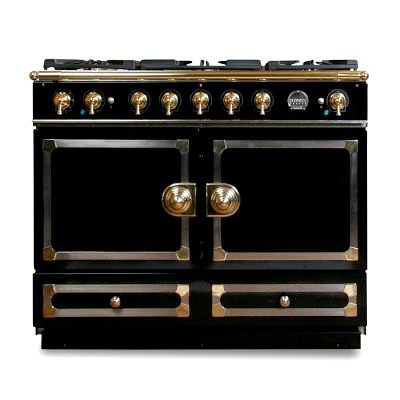 But I still ran my finger over them every time I went to William-Sonoma, always with "I'm just looking" on the tip of my tongue in case a salesperson happened to notice my infatuation. I imagined entire kitchens designed around the different colors. I would one day have a burgundy one in my imaginary country lodge, a light blue one in my fantasy Provence getaway, and a shiny steel one in my New York City penthouse that I would purchase with lottery winnings. Brent doesn't know this, but while many spouses could probably be seduced to stray with diamonds and furs, I might have cuckolded him for a romantic dinner cooked on my own La Cornue. I'm only human.
But I still ran my finger over them every time I went to William-Sonoma, always with "I'm just looking" on the tip of my tongue in case a salesperson happened to notice my infatuation. I imagined entire kitchens designed around the different colors. I would one day have a burgundy one in my imaginary country lodge, a light blue one in my fantasy Provence getaway, and a shiny steel one in my New York City penthouse that I would purchase with lottery winnings. Brent doesn't know this, but while many spouses could probably be seduced to stray with diamonds and furs, I might have cuckolded him for a romantic dinner cooked on my own La Cornue. I'm only human.
Speaking of cooking, recently Brent and I sold our idea for a Beekman 1802 cookbook to a publisher. It was a frightening thought for someone who loves and respects cookbooks as much as I do. Could we really fill up an entire book with recipes that other people would want to make? Brent and I grow or raise over 80% of our food. We render our own lard, bake our own bread, can our own produce, and sauté, fry, braise, broil, brown, toast, simmer and boil every edible object the Beekman can put out. And most of it turns out pretty damn good. (If not the first time, always by the third try.)
I think by now Brent and I have learned more than most cooking schools could teach about living and eating seasonally. I'm still not going to call myself a chef. But I think somewhere along the way I became a pretty decent cook. Even Jean-Georges gave me a thumbs up…not once, but three times.
But I really wasn't looking forward to testing out dozens of cookbook recipes on a relatively short deadline on the rickety, tilting, drafty old ranges at the Beekman. So I complained. A lot. Brent doesn't like when I complain. As you know, he's more of a buckle-down-chin-up kinda guy. We don't really have the funds for a new oven, he reminded me. The money we earn from Beekman 1802 goes right back into the business and community that we're building together.
But last Friday, when I arrived at the Beekman from the city, with a fresh batch of complaints filling my lungs, I didn't even have the chance for one to boil over before Brent took my hand and led me into the kitchen.
"Merry early Christmas," he said smiling, flipping on the light. "Now quit bitching."
There in the corner was a newly installed black La Cornue CornuFé stove, looking like it belonged there more than William Beekman himself. It has steel trim, with copper accents to match the hood over the fireplace. It's simply beautiful. And there are dials on it that I don't even know what they do. Yet.
Now we might not be able to afford heat this winter, but I don't care. I doubt I'll stray more than a few feet away from our new La Cornue anyway. I've got a cookbook to fill.
I still believe that all one needs is a flame and a pot to cook a meal fit for royalty. But you know what? Cooking for a king might be nice, but cooking like one is even better.
Thank you, Brent.
October 17, 2010
The Four Seasons
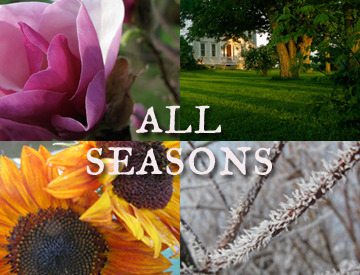
Before we ever started designing and creating products, we started our website to chronicle our attempt a "seasonal living". To us this meant taking the time to acknowledge what makes each season beautiful, important, and astounding. We soon realized that developing a keen sense of appreciation necessarily meant taking the time in each season to make note of what we DIDN'T have. Feeling the absence later enables you to rejoice in the presence.
There's a lot of work to be done managing a farm and a business, but we do indeed find the time to sit on the back porch of the Beekman and marvel as the months march through the valley.

An early autumn view from the back porch.
This is what inspired our new Back Porch Collection. Along with the candles, soaps, and other products we developed, we wanted to see how some of the artists in our B 1802 Rural Artist Collective would interpret the seasons at Beekman Farm, too.
We worked with two of our artisans to design a set of 4 pillows, each using their master techniques to capture the essence of a year in the country.
Betty Pillsbury previously created our romantic Heirloom Love Letters. Her latest creation for B. 1802 is our Lady Pillows.

Spring

Summer
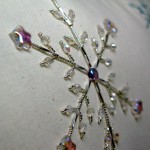
Winter

Autumn
How long you have been quilting?
I consider myself an embroiderer, rather than a quilter. Although, I most definitely am a crazy quilter. But, that involves embroidery! I taught myself embroidery when I was 8. I'll turn 48 next week. So, 40 years! I've done nearly every technique with needle and thread – embroidery like silk and metal, silk ribbon, surface embroidery, quilting, Brazilian embroidery, Hedebo, drawn-thread work, pulled-thread work, Hardanger, needle lace, needle painting, or nue, needlepoint, beadwork, sampler making, art quilts, etc. I also crochet.
What's the most memorable thing you've created?
I have nothing from when I was a small child. I think I still have the first afghan I crocheted when I was 14 or so. In 1996, I was asked by the White House to create a needlepoint ornament for the Blue Room Christmas tree. I designed and stitched a stocking ornament based on The Nutcracker Suite.
What do you love about what you do? What do you hate about it?
I love embroidery because it allows an outlet for my creative ideas. For me, creating a piece is both meditative and energizing. I easily slip "into the zone" and revel in the art taking shape from an idea in my head. Each piece always fosters more ideas for more pieces. I think if I didn't have an outlet for those ideas, my head would fairly burst open!
I hate my rheumatoid arthritis that sometimes limits my embroidery ability.
Why do you think quilting and embroidery is an important craft?
All handwork is important. Especially when more and more things beckon to instant gratification, a craft that takes time and thought appeals on a spiritual level. Whether that craft is embroidery or garden work, I find my center and am quite content there.
A new member of the B. 1802 Rural Artist Collective is master quilter, Ellen Marks. Here is the charming wool pin cushion she uses when creating some of her incredible works of art.

Ellen's grandmother's scissors. It runs in the family
When did you start quilting?
I have been quilting for about 20 Years. I rarely use a pattern for cotton quilts as I like to invent them as my creativity inspires me. I started wool quilting about 5 years ago and combined a pattern and my own design to complete a queen size handmade 100% wool quilt. I entered it in the Vermont Quilt Show just for fun and was overwhelmed when I won third place. That lead me to making wool pillows and also wool wall art. I use both of applique and needle-felting and incorporate antique buttons, crystals, semi-precious stones,etc. It has become my passion and I can do anything from whimsical to formal.
What do you love most about what you do?
This art form allows me to actually create things of beauty that I see in my head. There is never a shortage of ideas. It is very satisfying. There is absolutely nothing I hate about it, but I do sometimes find myself impatient, wanting to start another great vision before I've fully executed a previous one.
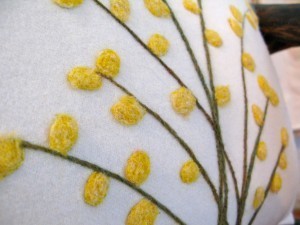
Ellen's "Summer" Pillow. To see more, click here
Mary and Cold Weather
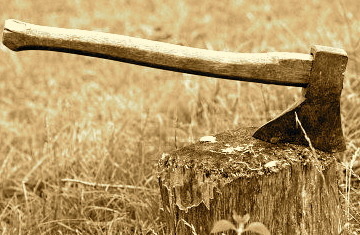
Mary Beekman is a four-year-old ghost who resides in The Beekman Mansion, and considers Brent and Josh her "imaginary friends." Follow Mary Beekman's Diary each week to learn what it's like to be a young child in early 19th century America
There has been snow falling for two days now. Father decided it would be a good time to begin to cut wood for the next season. The snow makes it easier to move the heavy loads of felled trees through the woods by sled. We use our horses, but some of the farmers use oxen to pull the sleds. The wood has to be cut and split so it can dry for the next season. Maybe that is why the dried wood is called seasoned wood. I hope the boys bring back some pine cones for the decorations for Christmas. I shall ask. When they come to supper after a day of wood cutting, their clothes smell like pine pitch. It is very difficult to remove pine pitch from your fingers. When I play with pine cones, my fingers get sticky in-between and it is fun to move them slowly apart. The skin on the side of each finger stretches out like a web. But when everything begins to stick to them, I really want them to just be clean.
Father said when there is plenty of snow to move the loads of wood, the price of wood is not as dear.* People in the city have to buy their wood. Mother uses birch, hickory and white oak and ash for baking. She says they make the best heat and provide the best coals. We have seven fireplaces in our house. Father and the boys calculate we will need about forty-four cords each year for cooking, laundry and warmth. Brent and Josh told me that was a lot of wood. I do not really know about cord measurements.
Splitting wood is difficult. The boys set up a solid chopping block that is about twenty inches tall to use as a base to stand a log while it is split. They use a splitting maul with a wooden handle…. also a kindling axe and a poll axe. Wood chopping can be dangerous and Father makes certain the men and the boys have sharp tools and are cautious and alert. Mother told the boys about a five year old boy who was blinded in a wood chopping accident. One of the men who works on the farm is missing the tips of two of his fingers on his left hand because he was not paying attention when he was chopping wood for the fires. If it is cold, the frost may cause the wood to slip on the block.
* In 1807 wood was selling for about $3.00 a cord.
A cord of wood is the amount of wood in a stack of 48-inch logs (or cut logs equaling 48 inches) that is 4 feet high and 8 feet wide.
October 16, 2010
Twist and Stout
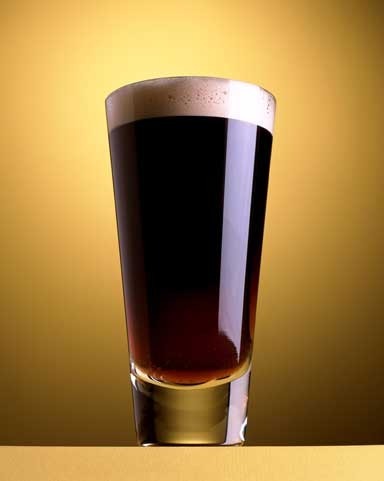
I spent last weekend in LA, and had dinner one evening at Wurstküche, a new downtown hotspot. The restaurant (as its name would imply) specializes in sausages and has about 25 German and Belgian beers on tap. I was surprised, not because there was such a place in downtown LA (which has become quite hip) but because I was taken there by a vegetarian whom I had never seen drink beer. But in addition to the various traditional würste (which have been among my favorite foods since early childhood) and all kinds of fancy and contrived "gourmet sausages" (for which I am not sure I really have any use) they also have a very good vegetable sausage (huh?) and my companion had recently been converted to beer after a recent trip to Europe and was giving herself a methodical course in malt beverages.
So, as we stood in line to order, we discussed what we were going to drink. I ordered an Optimator, a dark bock beer from the Spatten brewery in Munich to go with by bratwurst (I had decided against the rattlesnake and rabbit sausage that was the special of the day). "Hm," said my friend, " I'm not sure I'm ready for something that heavy. I'm still exploring light beers," and she ordered a Bitburger Pilsner. Now Optimator is stronger and heavier than the Bitburger, but the color has nothing to do with it, as can be seen if you mix yourself a "black and tan". Fill a glass half full of pale ale and then, pouring the beer gently down the side of the glass to avoid mixing the two, fill the rest of the way with Guinness. The opaque black stout will float on top of the lighter colored ale. The same thing will happen if you use Pilsner, which is even lighter, in place of the ale.
The color of beer depends on the malt used and the color of the malt depends on the degree to which the barley is allowed to color as it is dried. It can be absolutely white or caramelized to a dark brown. Darker malt may impart a caramel or molasses flavor where paler malt may remind one of fresh bread, but the weight of the beer is provided by dextrins, unfermentable sugars that are extracted in the mashing process and which do not affect the color. The characteristic blackness of stout comes from using a percentage of roasted barley in the mash, which, because it is not malted, contributes very little in the way of fermentable sugars or dextrin. So, while many dark beers may be heavier than many lighter ones, it is not always the case.
So what is light beer and what makes so-called light or (God forgive me) "lite" beer lighter? Well…it used to be that there was something called "small beer" which demoted a weaker beer, often a home made preparation of any fermentable substance, sometimes by re-soaking the malt to rinse of any leftover sugar that could be fermented but sometimes from molasses mixed with bran or other ingredients. I imagine it was not unlike Kvass, a traditional Russian peasant drink made from stale bread crusts. Small beer is mentioned by mediaeval writers and by Shakespeare (never favorably) and examples are still to be found if you look hard enough. A more immediate progenitor of lite beer (I am using that unfortunate spelling to differentiate from beers of light color) is the "near beer" of prohibition, which one write described as ""such a wishy-washy, thin, ill-tasting, discouraging sort of slop that it might have been dreamed up by a Puritan Machiavelli with the intent of disgusting drinkers with genuine beer forever." The same applies to today's lite. Often it is simply a pale lager that wasn't very good to start with has been watered down to reduce the calories and alcohol per serving (and increase profits). Sometimes the "mouth feel" has been further lighted by the introduction of enzymes that break down the dextins. Appetizing, isn't it? Lite beer is a brilliant marketing idea to make people think they are somehow being healthier than they would be if they drank real beer and therefore drink more of it. I have never had a lite beer that I would want to drink a second time. I am sure it is an abomination in the sight of the Lord.
Read more about our month-long celebration of the brew. Click here
October 13, 2010
She's Got Mail!
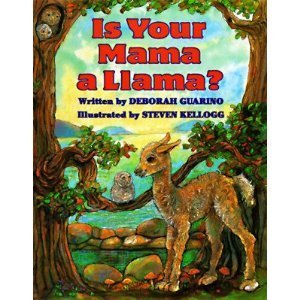
It's been no secret that Polka Spot is the break out star of The Fabulous Beekman Boys (at least in her own pretty head), and now she's starting to get her own fan mail:
October 7, 2010
Dear Polka Spot,
My name is Sydney Grace and I was born on June 22, 2010. While my mommy was on maternity leave with me this summer, we both got hooked on "The Fabulous Beekman Boys". We saw all of the episodes and then kept watching them over again because they were so funny. We think that Brent is so practical and serious and mommy thinks that she and Josh are kindred spirits. We like you because you make us laugh with all of your shenanigans and we think it is funny they way you bounce around the farm. Anyway, I am sending you one of my favorite books, because I think about you and the Beekman Farm whenever my mommy reads it to me. Maybe Farmer John can read it to you before you go to bed at night. We can't wait for the new season to start. Be a good little llama. Take care Polkie!
Your friend,
Sydney Grace
PS My mama is NOT a llama
October 12, 2010
Peppy Pepitas

Garlic Parmesan Pumpkin Seeds
Last year at the Beekman, Brent had the idea to carve up turnips instead of pumpkins as an homage to the original jack-o-lantern. A great a idea, sure, but with one major flaw – no pumpkin carving means NO PUMPKIN SEEDS. Devastating.
I wasn't about to let another Halloween go by without making at least one batch.
What's fantastic about pumpkin seeds is that you can really make any flavor combination you're craving. Think of your favorite seasonings that you'd normally use on cashews, almonds, or even popcorn and it should translate well to the pumpkin seed.
Garlic Parmesan Pumpkin Seeds
Ingredients
1 ½ – 2 cups pumpkin seeds
1/3 cup grated parmesan cheese
½ t garlic powder
¼ t kosher salt
2 T minced fresh rosemary
¼ t ground black pepper
vegetable oil
Spicy/Salty/Sweet Pumpkin Seeds
Ingredients
1 ½ – 2 cups pumpkin seeds
¼ cup light brown sugar
¼ t cayenne pepper
¼ t cinnamon
1 t kosher salt
vegetable oil
Instructions
1. Preheat your oven to 350 degrees and line a baking sheet with parchment paper.
2. Blend all dry ingredients in a food processor.
3. Make sure your pumpkin seeds are clean and dry. Then lightly coat them with vegetable oil.
4. Combine the spice mixture with the oiled pumpkin seeds and spread them evenly onto the parchment-lined backing sheet.
5. Bake for 12 – 20 minutes, depending how crispy you like your seeds.
Try these pepitas as a garnish to our Pumpkin Risotto. For that recipe, click here




